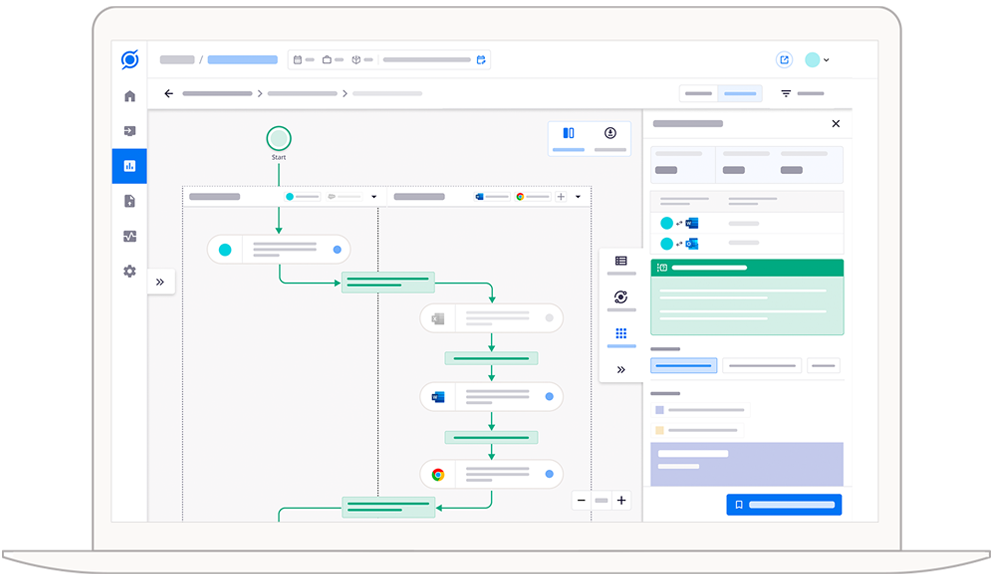Customer Stories
Ecosystem
Work Graph
Company
A Global Pharma Company
Reduced Cost of Operation
by 30% through Post-Merger
Transformation with Scout

The Challenge
A Global 500 pharmaceutical company was struggling with the aftermath of a significant merger and acquisition. The management faced the daunting task of realizing synergy targets committed to the board, particularly in consolidating processes, teams, and systems within the supply chain operations. These critical assumptions had yet to materialize, putting the CFO and the entire management under pressure to deliver on their promises.
Industry
Pharmaceutical
Location
Global
Attempted Solution before Scout
Demanding
12,000- 15,000 hours
of business users involvement was unsustainable
The CFO, Head of Supply Chain, and Chief Digital Officer, along with their internal Digital Transformation team and system integrator, embarked on a mission to rectify the post-merger challenges.
They deployed a process mining solution and organized manual ‘discovery workshops’ to understand the work patterns of their teams. However, these methods proved to be time-consuming and inadequate, demanding an unsustainable 12,000-15,000 hours of business user involvement across 66 processes and 13 countries, without providing the insights needed.
Enter

The CFO and Chief Digital Officer then evaluated and onboarded Scout to find and fix these problems. Scout’s AI model could be quickly put into action because it didn’t need complicated integration with current systems. The AI analyzed how supply chain teams interact with various applications, mapping out how and why work happens the way it does within the supply chain operations.
This led Scout to discover a key insight: the root of the problem was not just within the supply chain teams but arose due to poor visibility of key process information and lack of clear SOPs.
Scout’s AI model could be quickly put into action across
5 clusters in 13 countries,
because it didn’t need complicated integration with current systems.
Scout to “find and fix”
Step 1: Find
Based on this analysis, within two weeks, Scout’s AI model provided the following insights:
58%
effort was spent on core supply chain applications
Contrary to popular belief, only 58% of the team’s effort was spent on core supply chain applications and activities. This surprising statistic pointed to a significant work recall gap across the team, highlighting the disparity between the team’s understanding of how work is being done and how work was actually being done.
42%
time was spent on manual follow-ups
The AI also determined that the remaining 42% of the time was spent manually managing multiple spreadsheets, organising and feeding data into various supply chain systems and addressing queries and co-ordinating with regional and central supply chain teams and suppliers on communication apps.
It also pointed out regional discrepancies, like teams in Southeast Asia spent on an average 30% of their time on order management in Excel spreadsheets whereas the teams in India, Bangladesh and Sri Lanka spent 70% of their time on Excel spreadsheets.
Scout’s AI model further uncovered operators 1200 context switches per operator per day, due to toggling between applications due to information silos and disconnected systems.
These bottlenecks were forcing the team to incessantly toggle between different applications, ultimately resulting in a significant loss of productivity.
Step 2: Fix
Quick Fixes
- Focused User Training
Scout identified that new joiners were taking significantly longer to complete processes. By auto-generating SOPs integrating best practices, the team could effectively train new joiners, improving processing time by 40%.
- Central Repository for Key Excel Spreadsheets
Deep Fixes
- Standardization of Processes across the 13 Countries
- Integrated Workflow System
- Creation of a Credible Automation Pipeline
- Getting teams to work together across functions
- Fixing disconnected system
- Simplifying and optimizing work processes


Business outcomes
30%
10%
25%
AI connects interaction data to business outcomes
Your business generates billions of data points from team-machine interactions. Scout, our AI model, deciphers this interaction data to reveal what often remains unseen—the hidden challenges your teams face at work and how they affect business outcomes, whether it's cost optimization, revenue growth, customer or employee experience, or business continuity.
The AI then provides data-based recommendations to address these challenges, paving the way for improved outcomes.

See Scout in action.
Schedule your demo now!
